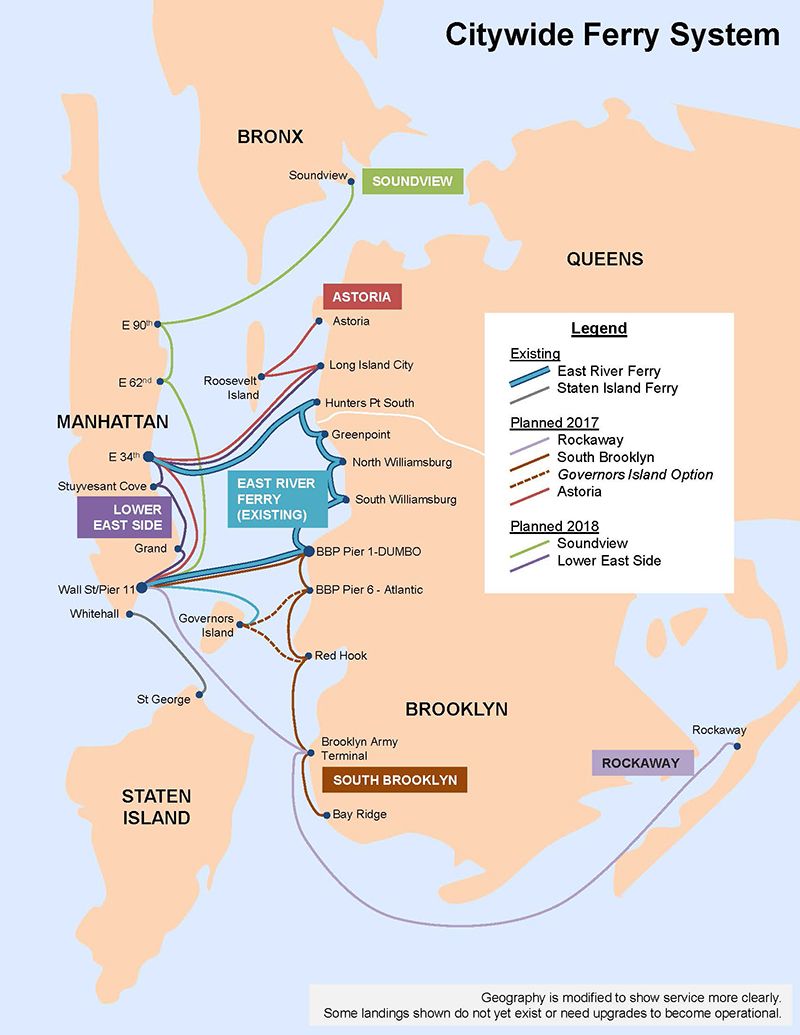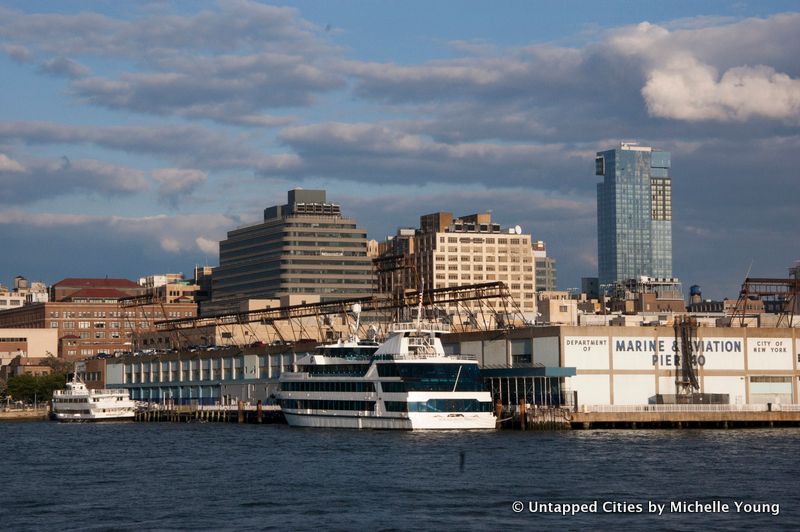Last-Minute NYC Holiday Gift Guide 🎁
We’ve created a holiday gift guide with presents for the intrepid New Yorker that should arrive just in time—



Map of proposed Citywide Ferry Service stops and routes via NYCEDC
Last week, Mayor de Blasio announced that San Francisco-based tour boat operator Hornblower Inc. won New York City’s bid to expand the existing East River Ferry service to six routes servicing 21 total landings. The expanded system will be rebranded the “Citywide Ferry Service” and will be the first truly citywide system in more than a century.
The system will be rolled out over two phases, with the first routes to open by summer of next year. That phase will link commuters in the Rockaways, South Brooklyn and the Queens waterfront with existing ferry terminals at Wall Street and 34th Street in Manhattan. The second phase, planned for a summer 2018 opening, will add landings in the Bronx at Soundview and at various points along Manhattan’s East Side. A third phase to Coney Island and Stapleton, Staten Island is being studied. When complete, Citywide Ferry will put over a half million New Yorkers within walking distance of a landing.

Image via Hornblower
A trip on the new service will cost the same as a Metro ride ($2.75), a discount from the $4-6 fare riders on the East River Ferry pay today. While ferry passengers won’t be able to transfer to an MTA subway or bus for free, there are plans to better integrate the two systems in the future. The lower, Metro-pegged fare has been imperative to the project since de Blasio first announced it at last year’s State of the City address. The mayor sees the system as an important component of his affordable, livable city agenda. For the first time, far-flung, lower income neighborhoods like Soundview, Bronx and Rockaway, Queens will have mass transit within close reach.
The lower cost comes courtesy of a $30 million annual operating subsidy the city will pay to Hornblower. But Anthony Hogrebe of NYCEDC tells Untapped Cities that Hornblower promised the highest quality of service at the lowest cost to taxpayers in its winning bid. The company’s experience comes not just as a provider of transportation, but of hospitality and customer service as well. Hornblower has been operating dinner cruises, private on-board events, and other touristy excursions in the New York Harbor for over ten years.

The East River Ferry sparked a surge of investment along its path, like here in Greenpoint
Hornblower won out over a consortium of three New York area-based companies: BillyBey, which runs the existing East River Ferry, New York Waterway, which operates lines between New Jersey and Manhattan, and New York Water Taxi, which operates the Red Hook Ikea ferry, among others. New York Water Taxi, which is owned by the Durst real estate family, has said it may be forced out of business as a result of losing the bid.

The East River Ferry was begun by NYCEDC in 2011 as a three-year pilot program, but was quickly extended after reaching its three-year goal of 1.2 million riders 18 months early. The East River Ferry’s existing contract and vessels will be bought by the NYCEDC and wrapped into the new system. The de Blasio administration expects the future system to carry 4.5 million passengers per year, roughly triple what the East River Ferry currently carries. Nonetheless, that forecast still leaves the five-borough system well behind the 23 million annual riders accommodated by the Washington State Ferries system in Seattle, currently the nation’s busiest.
Hogrebe of NYCEDC sees the expanded system as more than just an additional option for Manhattan-bound commuters. He cites the quicker pace of job creation in the outer boroughs relative to Manhattan as a dire reason for new, more flexible transit modes. The subway system was built at a time when outer-inner commuting was the norm, and changing routes or adding new ones is difficult and prohibitively expensive. But Hogrebe also hopes to see a reverse-commuter of a different stripe – those visiting neighborhoods they couldn’t before for the sake of discovering new amenities, businesses, bars, restaurants, and culture.
Places like the Rockaways and Coney Island already see their fair share of visitors but the new East River Ferry landings at places like Brooklyn Bridge Park and Hunter’s Point have stoked development sprees on a scale no one could have predicted. That virtuous cycle of new businesses spurring new potential visitors and visa versa, is part of the sort of outer-borough live/work/play synergy the City hopes to see following the rollout of Citywide Ferry Service. It is also, no doubt, a synergy that real estate development interests will hope to tap around the new landing locations, an opportunity not lost on critics of de Blasio’s proposed Brooklyn-Queens streetcar.

Hornblower Inc., the company selected to operate the new service, already operates some tourist-focused routes in the New York Harbor
In the mean time, the City has already committed to invest $55 million to build ten new ferry landings and rehab six others, and is hard at work fabricating barges for the future landings at a shop on Staten Island. Soon you may be able to cruise from Socrates Sculpture Park to Tacoway Beach for the price of a subway ride–but with fresher air and much better views.
Subscribe to our newsletter